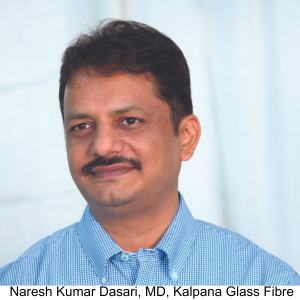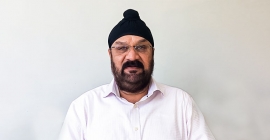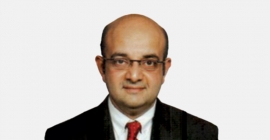‘High-end signage market is very promising’
By Aayush Mohanan - May 01, 2023
Naresh Kumar Dasari, Managing Director, Kalpana Glass Fibre and Macro Media Digital Imaging shares his views on the signage market trends in India, and the prospects of DOOH media, particularly at fuel filling and EV charging stations.
 After 20+ years in the digital printing business what was the reason for you to have acquired Kalpana Graphics?
After 20+ years in the digital printing business what was the reason for you to have acquired Kalpana Graphics?
Macro Media Digital Imaging (MMDI) acquired Kalpana Graphics in December of 2020 and we have already completed two financial years post the acquisition. Most of the products that we print also go into the signage industry, and overall, we felt that it was a good opportunity for us.
Kalpana Graphics is principally engaged in creating signages for petroleum companies. Would you be working with the corporate brands as well?
Well, that’s the plan. Kalpana Graphics has a long history of being in the signage industry. As of now, we only cater to Oil Marketing Companies (OMCs) but we would want to use that knowledge and pave our way into creating signages for corporate brands. It may be too early to say when we will enter those segments but that’s definitely not too far from now.
What is the likely impact of EV charging stations on the fuel stations, and in turn your business?
Some of the OMCs have started to install EV infrastructure within their fuel stations itself. However, very few places have EV charging stations outside the fuel filling stations.
I would think it’s too early to say how the sector is shaping up. On the other hand, OMCs continue to invest in fuel stations and they are constantly on the rise, thereby increasing their foothold in the market.
Most of the switch over to EVs is happening in the two-wheeler segment, and even there the EV market share is only about 10%. In the case of four-wheelers that share is a lot lower. Hence, I believe only time will tell how long it will take for the technology to improve and for the market to adapt to the same.
Talking about your parent firm MMDI, how do you view the future of digital printing in India? Will DOOH will take over this space?
DOOH has been there in several countries for some time, but the adoption of the same in India has been very slow because of the regulatory environment as there are no clear-cut laws governing this medium. In India, perhaps the only city that has seen the rise of DOOH is Mumbai and that too in the last two years or so. In Mumbai, the civic body has laid out clear regulations for licensing and setting up of DOOH media in the city.
We partnered with Innotronix Labs, a Pune-based company and won a contract to put up 50 LED screens at various Bharat Petroleum and Hindustan Petroleum stations in Chennai. We have installed 5-6 screens in the last six months or so. However, we have faced numerous problems with receiving permissions in time and, in fact, people have even filed complaints against our screens citing that it was affecting their eyes!
Some 5-6 years ago, while researching on how DOOH might affect the traditional OOH media, I travelled to markets like Jakarta and Manilla where DOOH penetration was already high unlike in India. Today, in India there is a good potential for DOOH to gain as much as 40% of the OOH market, at least in the Tier 1 cities should the regulatory environment change. I should like to believe that the authorities need to wake up and realise the revenue opportunities that lie in these technologies. However, in the emerging circumstances, DOOH may not gain a market share beyond 20-25%.
As a service provider to brands/advertisers what challenges do you face in the current scenario?
When we started out in the digital printing business, there were certain barriers to enter that business as a large amount of capital was required to get started. However, those hurdles have disappeared over the last 10-12 years as the setup cost came down to 1/15th of what it used to be when we started out. The lower entry barrier has brought in a lot of players into the market. While there is a certain democratisation of this technology, it has also increased the number of competitors in the market which in turn led to unhealthy pricing of services.
What are the gaps in the specialty signage business in India that Kaplan Graphics aims to bridge?
While there are many sign makers in the market, very few have the capability to deliver high-end signages that are used at airports and shopping malls or the large-format signs used for tech companies.
We feel that there is a good opportunity for us to enter this segment, and as we speak, we have started to build a plant in Hyderabad for the signage business and it should be operational by the last quarter of the current financial year. Currently, we have eight production centres across the country and our plan is for 50% of these units to have some degree of sign manufacturing capabilities by the second half of the next financial year.
Compared to international markets, where does the specialty signage business in India stand?
I don’t see anyone in Europe doing something extraordinarily different from what we offer here in India. Of course, the number of service providers who can deliver such solutions is low in India – in a country as large as ours there are about 25-30 service providers who have the facilities to provide the level of services seen in other countries.
Hence, there is need for investment in this country, but in terms of the service provided, I believe we are at par with other markets. And as the demand from the clients increases, the existing service providers will also increase their investments and scale up to the required level.

Stay on top of OOH media trends








